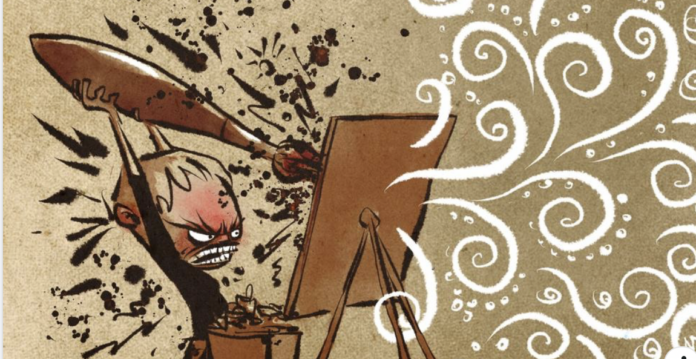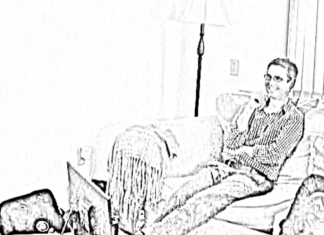Here are a few brief and far from exhaustive reflections for ISTDP-informed therapists interested in the technique of portraiting the impulse component of emotions and feeling-states, such as rage, longing, and tenderness.
When portraiting, we want to first and foremost be clear about our aim. Are we using this technique to build capacity, restructure defenses, and cement the conscious therapeutic alliance (clarity on the therapeutic task)? Or are we aiming for an unlocking of the unconscious?
Common difficulties when using this technique:
When aiming for an unlocking, having an insufficient rise in complex transference feelings (this is synonymous with an insufficient operation of the transference component of the resistance). Davanloo spoke repeatedly about the need to reach a “cruising altitude” in order to have major unlockings of the unconscious (personal communications, 2012).
We often invite portraiting prematurely. With a sufficient rise and sufficient defense work, guilt and grief typically follow the sadistic impulse quickly, like two waves in quick succession.
Assuming sufficient capacity and sufficient clarification work around defenses, sustaining a build-up of the complex transference feelings by staying with pressure and challenge will typically accomplish this.
“That still doesn’t say how you feel. How do you experience this feeling? Still we don’t know how you experience the feeling. Why do you want to do this to yourself? What are you going to do about this barrier? Still you haven’t done anything, still we don’t know your feelings. Did you come here to defeat yourself? Why even come here if you are going to remain stoic and detached?” These type of interventions, exhorted with an edge in the voice, can do the job with the class of patients that you would be using an unremitting approach with.
Problems with portraiting not yielding a smooth unlocking of the unconscious are also often connected to insufficient defense work, where the client has not really turned fully against their defenses (this is synonymous with not having enough of a conscious therapeutic alliance). This can mean that we have not adequately identified the major column of defense and made that the focal point as much as is needed. Skimping on pressuring the patient about their will to let go of the defense in favor of pressure to feeling can create this issue.
If the sadistic impulse has been wholly experienced but there is no passage of mixed feelings, the patient is often “nursing a grudge” (Davanloo, personal communication, 2012). In my experience, what is more common is that the impulse has not yet been fully uncovered, but the nursing a grudge phenomenon does occur.
Yet another common issue: the patient is having feelings and impulses towards cartoons, or uni-dimensional others. Here the patient portraits but there is no relief, no returns, just a chronic grinding without actual traction. This defensive state can be tactical or represent more malignant and regressive projective processes where contact with reality needs to be established first.
Another common issue when portraiting is when the process becomes choppy, cerebral, and the therapist and patient end up debating what might be a defense.
If you have to try to convince your client that they are using a defense mid-portraiting (or at any point, really), it’s often a sign that something is out of alignment. This can result for different reasons. One reason is that the portraiting was premature, and the therapist is essentially “bargaining with the patient’s super-ego,” (meaning we need to deal with resistance, not invite portraiting), or it can result from the therapist having rigid notions of what constitutes real aggressive impulses, thinking that the only real impulses are physical, and not open to genuine urges to hurt others psychologically and emotionally. Or the therapist is conflating the urge to shout and verbally lash out with actually shouting (explosive discharge). If the patient is in touch with genuine urges that are outside the box and the therapist questions them, the misalliance will often be major.
When aiming for capacity building and shoring up the patient’s understanding of the therapeutic task so that the conscious will can be fully on line, the problems often center on insufficient differentiation work on the poles of the triangle of conflict or insufficient defense work, which can include defenses against reality.
If the projections are tactical in nature, one technique that can be very helpful when these difficulties are occurring is to invite the patient to portrait the impulse with one hand while the other hand simply rests on the physical gestalt of the person they are having feelings towards. This can establish a sense of real contact with a three-dimensional other, and more quickly bring up the mixed feelings.
If the projections come with a lack of reality testing and represent a real split where the patient truly relates to part-objects, portraiting is not helpful but only reinforces these splits and projections. Work on helping the patient connect to whole objects needs to take priority in these cases.
Another problem: the patient is very familiar with ISTDP. Here the patient knows what is expected, and the whole thing can devolve into a “same old song and dance” situation. The process has in a real sense been “contaminated,” and there is no element of surprise at all. During cases like this we often need to “bush-whack it,” and become creative. I tend to have good outcomes in cases like this by simply staying with with one or another form of pressure on the resistance and wait for feelings and impulses to emerge entirely organically and spontaneously, as the route of inviting portraits of the impulse are a no-go in situations like these.
These are but a few, skin-deep considerations of a complex and far-reaching topic.


 I have a passion for practicing ISTDP informed psychotherapy and I enjoy writing about it. For more information and what I do, visit my website: www.johanneskieding.com
I have a passion for practicing ISTDP informed psychotherapy and I enjoy writing about it. For more information and what I do, visit my website: www.johanneskieding.com


















